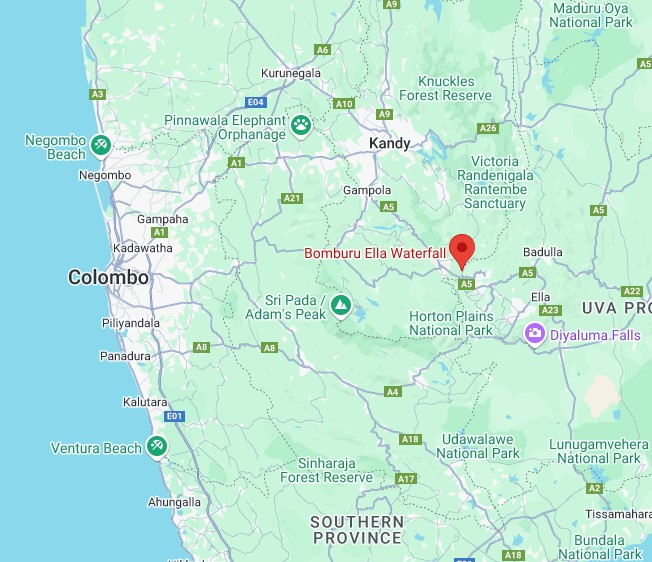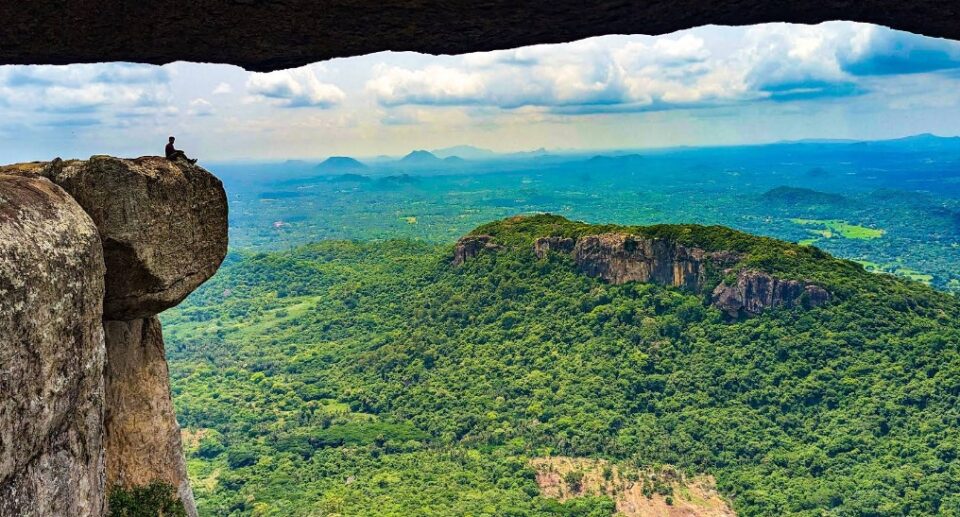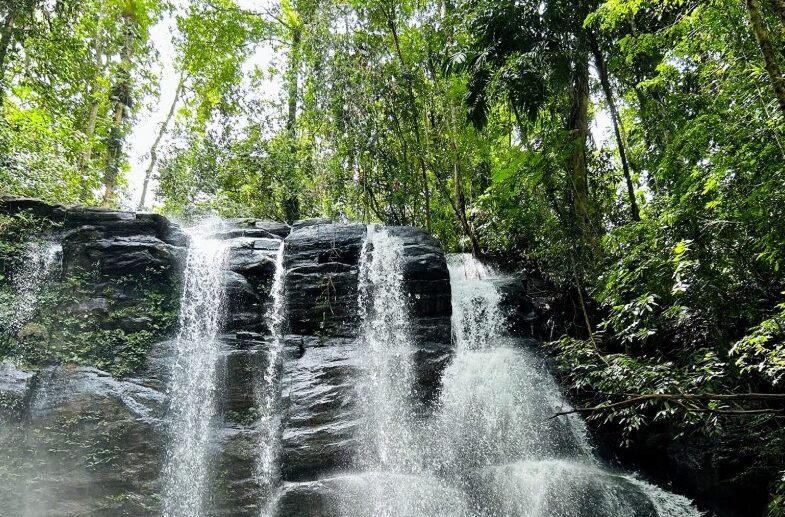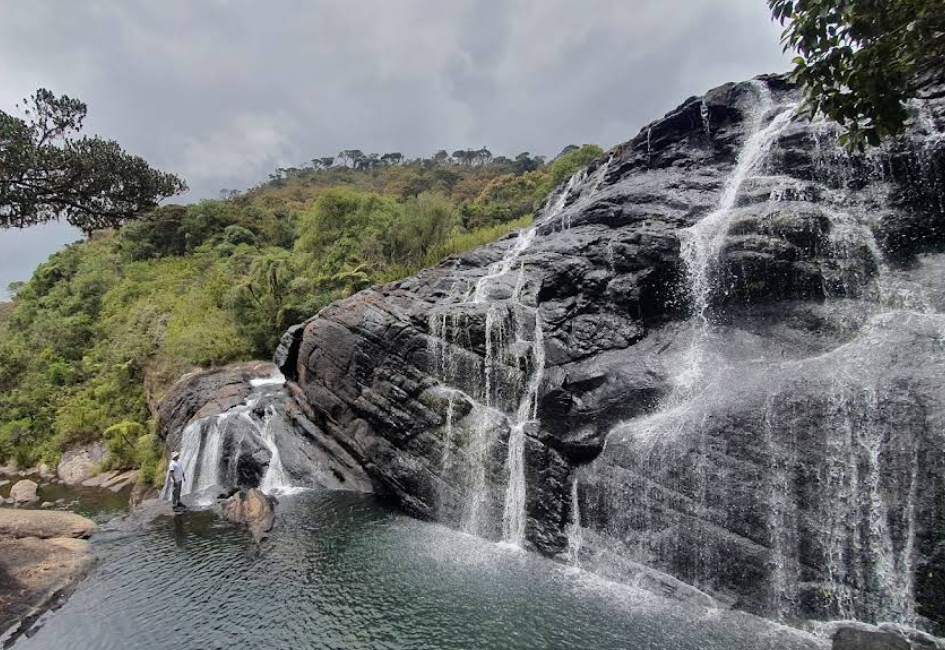Bomburu Ella Waterfall: A Hidden Gem in Sri Lanka’s Hill Country
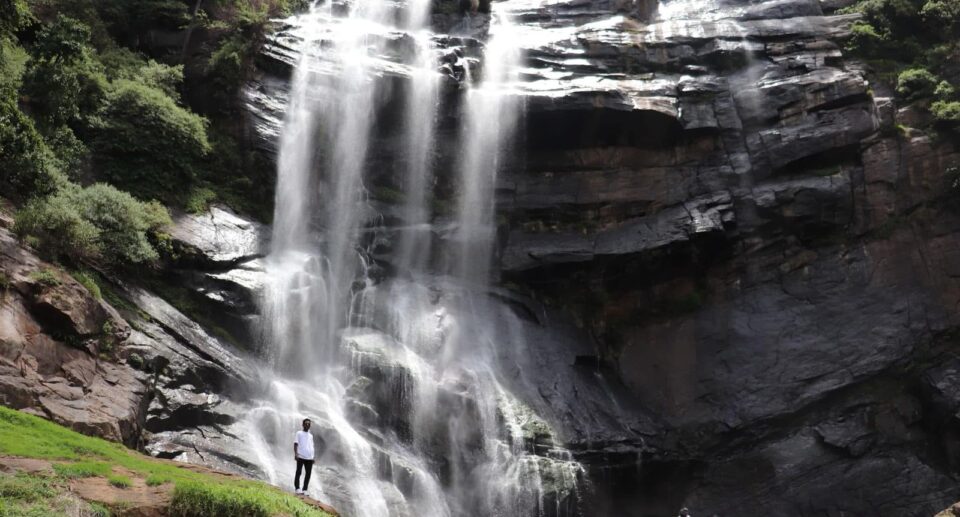
Amongst the rolling hills and dense green forests of the central highlands of Sri Lanka, Bomuru Ella, spelled as Bomuru Ella Falls, is one of the island’s lesser-known but totally enchanting waterfalls. Located near Nuwara Eliya, in the central province, this multi-level cascade flows freely from the Piduruthalagala mountain range to create a serene yet powerful spectacle of nature. With a breathtaking height of about 50 meters, Bomuru Ella not only amazes visitors with its beauty but also offers a peaceful escape into nature, far from the tourist trails.
Geographical Setting
Bomuru Ella is about 15 kilometers away from the Nuwara Eliya town, a popular hill station famous for its colonial charm and pleasant weather. The waterfall falls within the Badulla District in the Uva-Paranagama Divisional Secretariat Division, but it is collectively categorized with Nuwara Eliya since it is near. The countryside comprises rolling hills, tea estates, pine woods, and vegetable plots and hence accessing the falls is an experience on its own. The river feeding Bomuru Ella comes from the highlands, the majority from the Piduruthalagala mountain range, the highest in Sri Lanka.
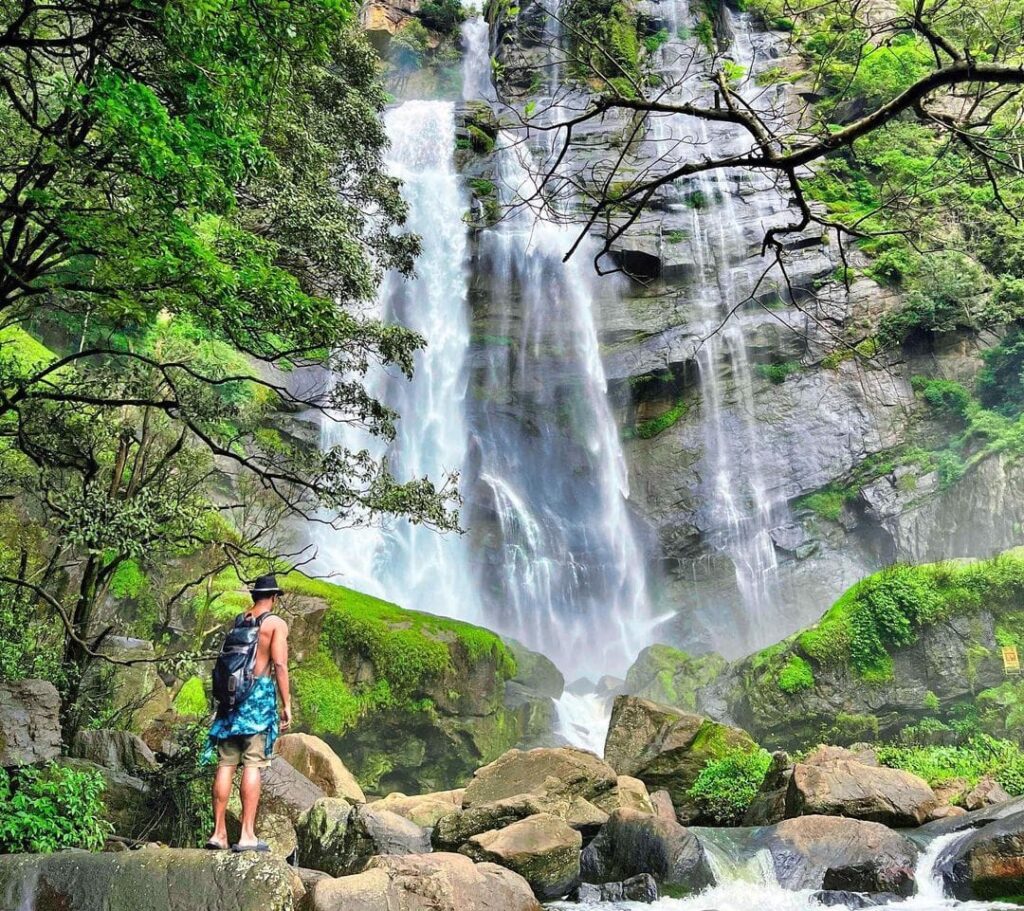
Characteristics of the Waterfall
Bomuru Ella is not a single-drop but a cascading waterfall with more than one level, giving it a clearly beautiful look. It descends in several levels over a series of rocky ridges, creating natural pools at intervals. During the rainy season, the waterfall is a deafening roar of nature, but during the dry season, it relax into a milder and rhythmic stream. The spray of the hammering water cools the surrounding air, a pleasant respite from the hot tropics. The area on the ground near the waterfall is heavily covered with moss, ferns, and other dense foliage, adding to its loveliness.
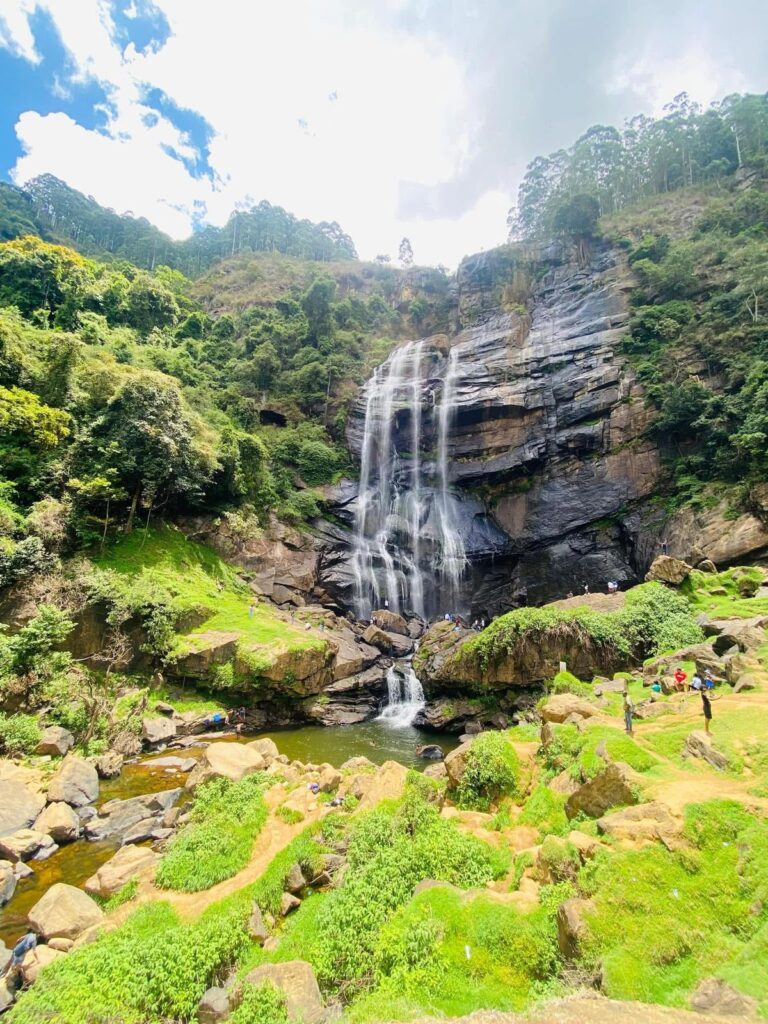
Ecological Significance
The area surrounding Bomuru Ella is ecologically sensitive and belongs to Sri Lanka’s central highland ecosystem, which is designated as a UNESCO World Heritage Site. The forests in this region are inhabited by many endemic plant and animal species. Birds like the Sri Lanka whistling thrush and mammals like the purple-faced langur can sometimes be seen in the surrounding environment. The stream which forms Bomuru Ella also contributes to the local watershed, with an important function of sustaining agriculture and village water supply downstream. Hence, the waterfall is not only an eyesore but also a component of the local ecosystem.
Cultural Context
While Bomuru Ella lacks the mythological or religious significance of the other waterfalls in Sri Lanka, it still holds significance to local people as natural heritage. Its waters are sanctified by some of the villagers who utilize them for ritual cleansing or local medicinal purposes. The calm ambiance of the falls also renders it a favorite for spiritual retreats, picnics, and relaxation. In contrast to commercialized tourist spots, Bomuru Ella retains an element of authenticity and local charm that many other destinations have lost.
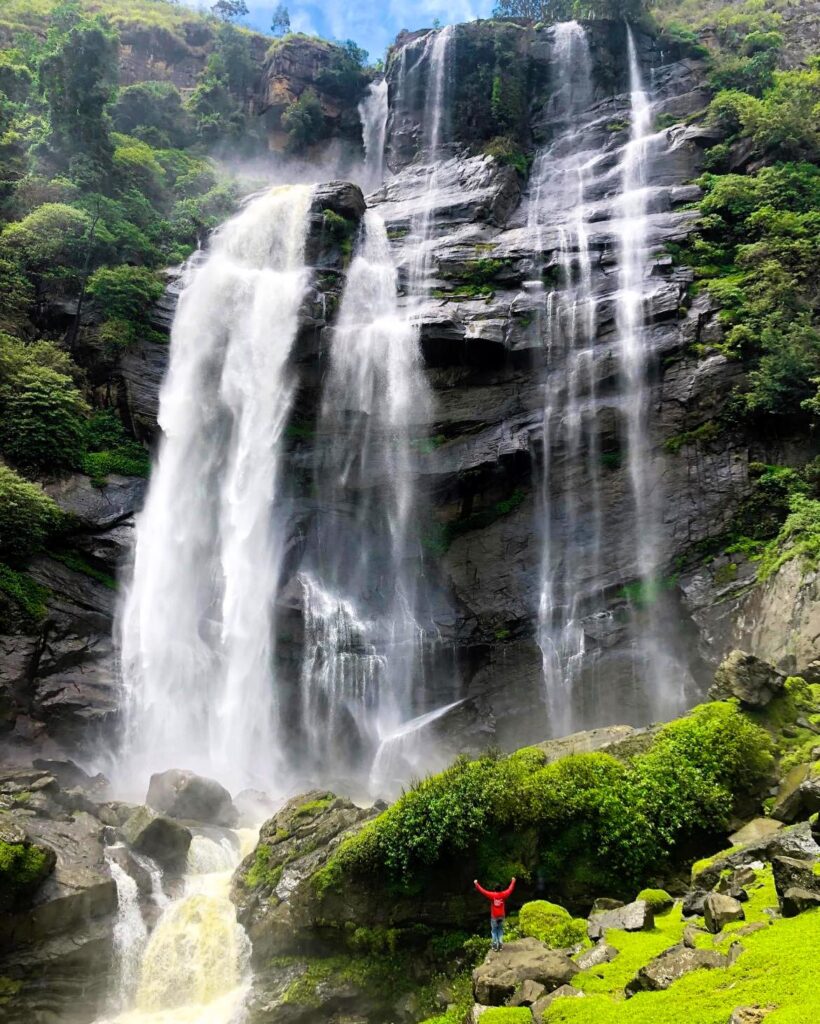
Tourism and Accessibility
In recent years, Bomuru Ella has attracted some modest interest from eco-tourists and nature lovers, especially those who are fond of off-the-beaten-path travel. But it is still quite off the beaten track compared to other more well-known Sri Lankan waterfalls like Diyaluma or Dunhinda Falls. To reach Bomuru Ella, travelers typically start in Nuwara Eliya and drive short distances towards the village of Bomburuella. From there, a 1.5-kilometer hike goes through tea plantations and spots of forest before arriving at the falls. The trail is quite straightforward and offers beautiful views of the surrounding hills and vegetation.
Because it is located far away from civilization, Bomuru Ella lacks commercial facilities like stores or large parking areas. Visitors are advised to carry their own supplies, i.e., food, water, and trekking boots. The visitors who go through the hassle of reaching the falls are rewarded with an isolated and unspoiled natural environment ideal for taking photos, meditation, or simply enjoying the serene sounds of cascading water.
Preservation and Responsibility
As more visitors get to know Bomuru Ella, conservation becomes ever more necessary. The local authority and environmental bodies occasionally organize clean-up drives and campaigns to keep the site clean of litter and habitat destruction. Visitors are also requested to implement Leave No Trace practices—such as avoiding the use of plastics, not destroying wildlife, and not bathing at the stream—because the stream water is used by the villages around. Sustainable tourism activities such as community-based activities may help ensure that Bomuru Ella stays unpolluted for generations to come.
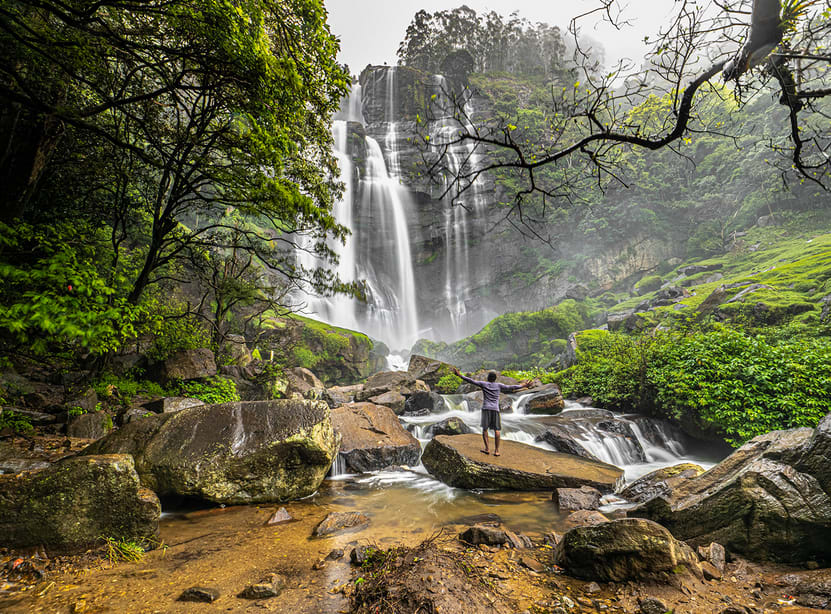
Best Time to Visit
The best time for visiting Bomuru Ella would be between the monsoon month (April to November), when the waterfall is at its peak and most impressive. Visitors, however, need to exercise caution since the route that goes up to the waterfall is slippery and the wet rocks by the side are dangerous. For others who prefer not to climb as hard, the dry season (December to March) offers better climbing conditions, though the volume of the waterfall could be reduced.
Early morning visits are normally preferred due to the gentle light and cold temperatures. Early arrival also translates into fewer crowds, allowing visitors to enjoy the tranquility of the site without interruption.
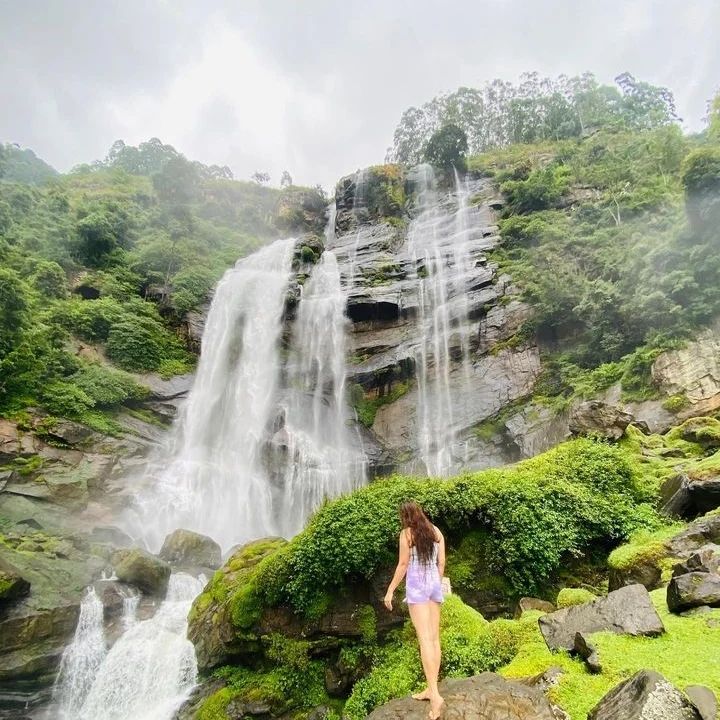
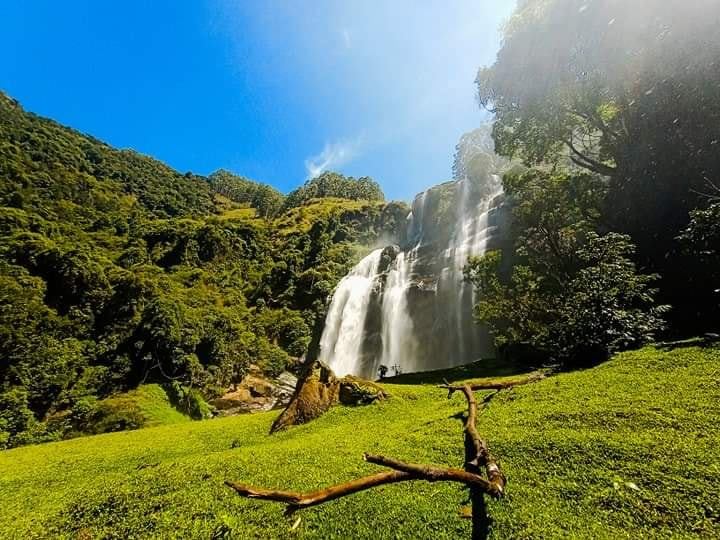
Attractions Around
While Bomuru Ella is a destination in its own right, being near other attractions makes it easy to integrate it into a larger itinerary.
Points of interest nearby include: Horton Plains National Park – Biodiverse tableland home of the iconic World’s End vantage. Gregory Lake – Picturesque area for picnic lunch and paddle boat ride at Nuwara Eliya. Hakgala Botanical Gardens – Spacious, neatly manicured garden comprising native as well as overseas plant species. Piduruthalagala – Highest mountain of Sri Lanka, which enjoys good view spots with a pleasing climatic environment.
Bomuru Ella is a testament to Sri Lanka’s natural beauty and ecological diversity. Its stepped cascades, unspoiled environment, and peaceful setting create a refreshing escape into nature for those who care to seek it out. Far from the noise and crowds of mass tourism, it gives visitors a chance to reconnect to the earth in all its most untouched glory. Whether you’re a hiker, photographer, or simply someone in search of quiet inspiration, Bomuru Ella promises a rewarding and memorable experience. As awareness of this hidden gem grows, it is our collective responsibility to protect and preserve it so that future travelers can also witness its untouched charm.
It is located near the border of Nuwara Eliya and Badulla districts, approximately 15 km from Welimada town.
Map of Bomburu Ella Waterfall
